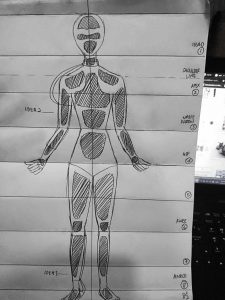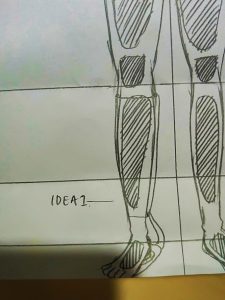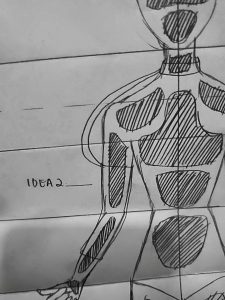1 WEEK MORE AAAAAAAAHHHHHHH

For my Final Project, I decided to do a Child’s Best Friend; Morrie. Morrie, named after the teacher from novel “Tuesdays with Morrie” is a handheld interactive substitute pet which aims to teach children how to treat their pets with proper care. It encourages children to learn how to care for them before getting a real pet.

WHY THO- CONCEPT
Pets are getting mistreated and neglected, and this is a rising trend. But pets are a great companion and do not deserve this.
Lack of Education
With pet abandonment and abuse cases on the rise worldwide with a lack of proper education for children (statistics available in my previous post with my powerpoint research), I decided to make a pet that can educate children from young.

Children are being educated about how to take care of their environment and how they should not waste food. They are taught about how they should study hard and not to do drugs. There are so much more. However, in my opinion, the things properly taught to children universally are things that are directly impacting people and their welfare. This is why they are educated to protect themselves.

SPCA Singapore’s Statistics for pet abandonment and health issues
However, issues such as pet neglect are rarely preached even in schools unless the topic rises during class, perhaps due to how it does not directly impact our lives. Environmental Education, Design and Technology, Art and Crafts, Social Studies; but none of these lessons actually touch on animal care (not that I expect it too, it would be weird since it is such a specialized topic, but there should still be education or some sort, somehow). Some preschools do take their kids out to petting zoos and that is when they are reminded to treat the animals carefully, but this is probably one of the only times where children are actually directly taught about taking care of animals. The causes and consequences of mistreating pets are not really preached often.
Furthermore, educating children to take care of pets is a very early step to teaching children how to take care of one another, be it their friends, family, or even strangers. Teaching them that it is okay not to take care of a pet would inculcate an unhealthy culture and mindset in children that taking care of other living things is not very important. Which is bad.
Spoiled Kids
Children in Singapore can afford better things and more things considering that we are a first world country. More children can get what they want, and those who can tend to be more spoiled by their parents. There is a “I want a puppy!” & “You may have it” mentality especially among the younger children.
However, parents spoiling their children to make them happy results in many families being unprepared to take care of a +1 in the family, because they only cared about making their children happy when they bought the pet. This is reinforced by the fact that this +1 in the family cannot speak human language, and thus it is harder for pets and their owners to communicate if the owners are not used to taking care of pets.
Eventually, as our pets grow old, owners tend to run into more issues such as money, health and boredom. They loose interest, or cannot afford spending money on the pet anymore/ do not think that spending money on them is worth it anymore since they are no longer cute pups, or because the health issues in aging pets are too bothersome to take care of.
Stupid people.
Busy Bees
With great work-life progression and a constant need to ramp up your standard of living and quality of life comes a hectic work life with no balance. People tend to have less time to take care of their pets if their hearts are not in it, and they think of it as a chore. Constantly doing Overtime at work or staying back late at school to finish projects also result in pets being neglected and unhealthy, because they do not have the care and attention for them to live healthily.

Speaking on behalf of SPCA which I am a part of, they are tired of receiving abandoned pets on their door steps. They are tired of listening to reasons such as not having enough time to take care of the pet, not being interested anymore, or not having enough financial capabilities to take care of the pet. People need to start learning that impulse buys just for animal cuteness is not going to work out in the long run. Pets are going to need extensive grooming, healthcare and daily needs. Pets should not be neglected and mistreated just because people feel that they cannot take care of them anymore.

An average human being lives for 75 years. Pets only live for 10-20 human years (for felines and canines). They plan to spend their whole life with you, and it is not fair to treat them badly or abandon them just cause you think it is troublesome to have them at one point of your life.
To the parents- please educated your children. Do not brush off the fact your children are throwing their pets up and down like a slinky. Do not ignore that your children are sitting on their doggos and asking them to march forward, my white horse! Please stop your children from squishing the skin and flesh of your pets; the older ones do feel pain. Do not let them grab their pets by their collars or neck; it hurts for them. And do not pluck the fur off your pets, it is so very painful even though they may seem fluffy and in abundance of fur…
The solution to this attitude correction is to teach potential offenders to differentiate the right from the wrong from young. We have to prepare children when it comes to taking care of other living things, and I believe that when it comes to children, using common jargon (language and actions that are very familiar and friendly to children) is beneficial in their learning process and will encourage them to absorb information better, which is why Morrie is born!

Morrie is meant to replicate a pet and help children to experience a simulation about what it feels like to own a pet with the responsibilities that comes along with it, such as not neglecting it (especially since puppies require a lot of attention!). As a substitute pet, Morrie can prepare children for the real deal of taking care of a real pet, so that we can avoid any unwanted pet neglect in the future due to impulse buys.
The reason I chose a golden retriever that is rather generic in appearance is because golden retrievers are known to be gentle and friendly dogs, which are less intimidating and more well-liked for people in general. A generic outlook instead of the funky pet animals found at shopping malls would be able to imitate a pet more.
FINAL IDEA + CLASS PROGRESS
Morrie is an interactive toy, as previously mentioned.
Making use of IKEA’s Gosig Golden Retriever, I modified a generic house pet looking plush toy into something along the lines of an imaginary best friend! I don’t know if Morrie was brought home knowing he was gonna be sliced open and modified the next day, though…
beep boop this is morrie
Morrie is a pre-made soft toy from IKEA, but I have modified its insides. I have cut off open its stomach to add a zip, so that I can plug in my arduino components and batteries. I also cut open the head to ease the input of motors and sensors. For Morrie’s tail, I realized that it was disconnected from the body. Hence, I had to cut it off, make a hole at the bottom of the tail, and then cut a hole at Morrie’s butt before sewing the tail back into the body so that they became one entity.




Afterwards, I used Montenra from IKEA (PVC Pipes in a sense?) to construct a backbone for Morrie. A long piece is stretches from Morrie’s neck to its butt. Then, I secured my servo motors to either ends of the spine, and added a long bone for both servo motors to move Morrie’s head and tail. One of the bones was stuck inside Morrie’s tail, and the other was left in the middle of Morrie’s head. In a sense, Morrie’s bone structure was like an S-Shape.

IKEA’s Montenra PVC Pipes


I plan to (and have currently) incorporated sensors into the doggo for it to react to people/children interacting with it. I will go through this in point form as shown below:
Stroke Sensor:
Making use of normal threads and conductive threads and some help from class, conductive thread is sewn onto the top of Morrie’s head as shown below. This stroking function allows for a sound track to be played through the Arduino MP3 Module once the circuit of the conductive thread is connected.


Basically, what happens here is when someone gently strokes and ruffles Morrie’s head, Morrie will feel happy and bark happily. This shows that Morrie is being cared for and not being neglected.

Ultrasonic Sensor:
When no one is around, Morrie will feel negleted, and Morrie will hence feel lonely. When the Ultrasonic Sensor does not detect a close presence (dignified by the distance it detects), Morrie will start to whine pitifully and sadly, as triggered by the MP3 Module.

However, when someone approaches Morrie, the ultrasonic sensor will pick up the close distance and Morrie will become happily. When this happens, Morrie will continue whimpering in neediness and wag its tail and head in its eagerness for attention. The wagging of the tail and the head is done via Servo Motors control.
Pressure Sensor:
This sensor is meant to remind children that animals do feel pain! When someone presses on or squishes Morrie too tightly, the Pressure Sensor, in this case a Force Sensitive Resistor, will detect a High Pressure threshold. This will result in the MP3 Module triggering a yelp of pain felt by Morrie. This tells Children that they should treat their pets gently instead.

As of now, I have connected the servo motors, force sensitive resistors, ultrasonic sensors, and stroke sensors accordingly in my circuit. However, I seem to be facing an issue with connecting multiple FSRs with different readings. If I cannot fix this issue, I will most likely just be using one FSR on the stomach, because that is where people squeeze animals the most.
My MP3 Module is also not working even though it has been a gruelling 3 weeks of trying to get it to work. I am currently waiting for my DFPlayer to arrive from Taobao, and to see if the player works. Hopefully, it will work, because the sound function and sewing Morrie back up is pretty much what I have left to do.

If there is time, I will be inserting LED lights onto Morrie’s eyes, which will respond to sadness and happiness accordingly. Being neglected and in pain will cause Morrie’s eyes to go off, but being close to Morrie and stroking it will cause the light to blink happily. I will also be attaching a zip to Morrie’s head and a covering for the ultrasonic sensor.
For my Exhibition Specs, Morrie will be placed either at the corner of a pillar to look lonely, or will be exhibited in an “Adopt me” cardboard box or basket where pets are usually abandoned in.
I also considered adding an LED Matrix 8×8, but I decided against it in the end because it might make Morrie look too mechanical, which is against my point of it being a pet simulator.






























